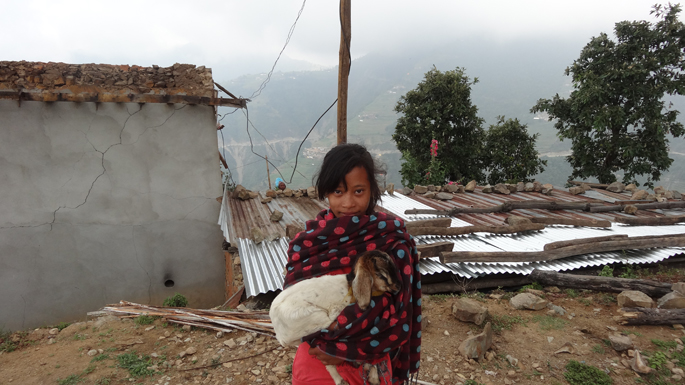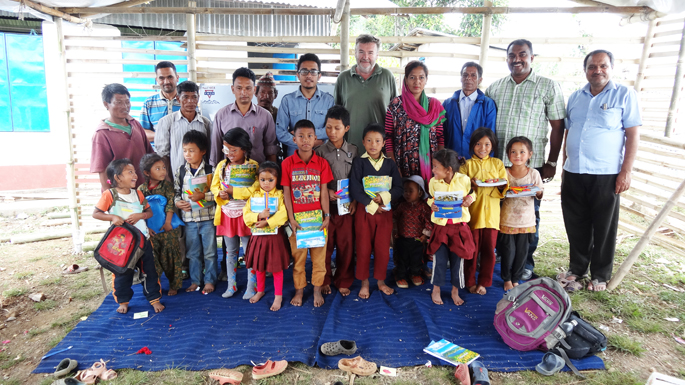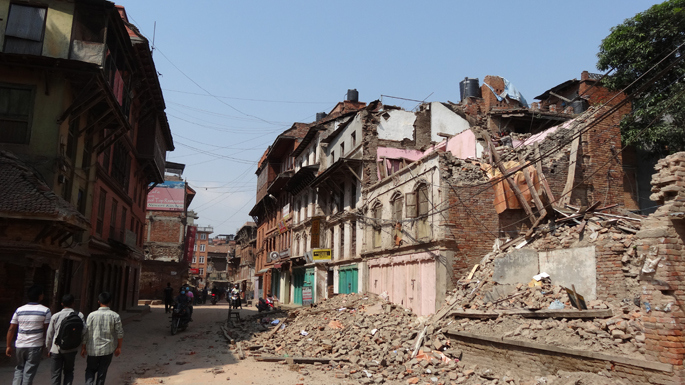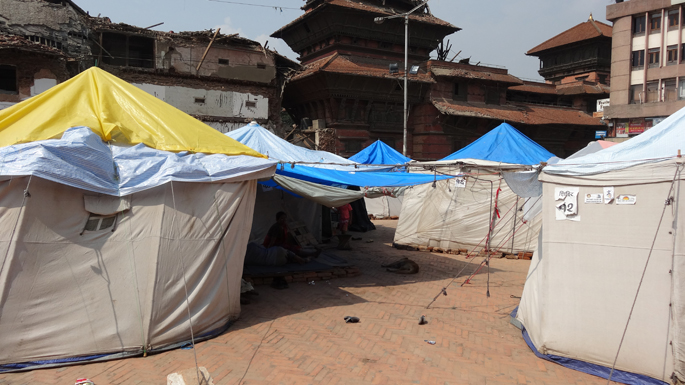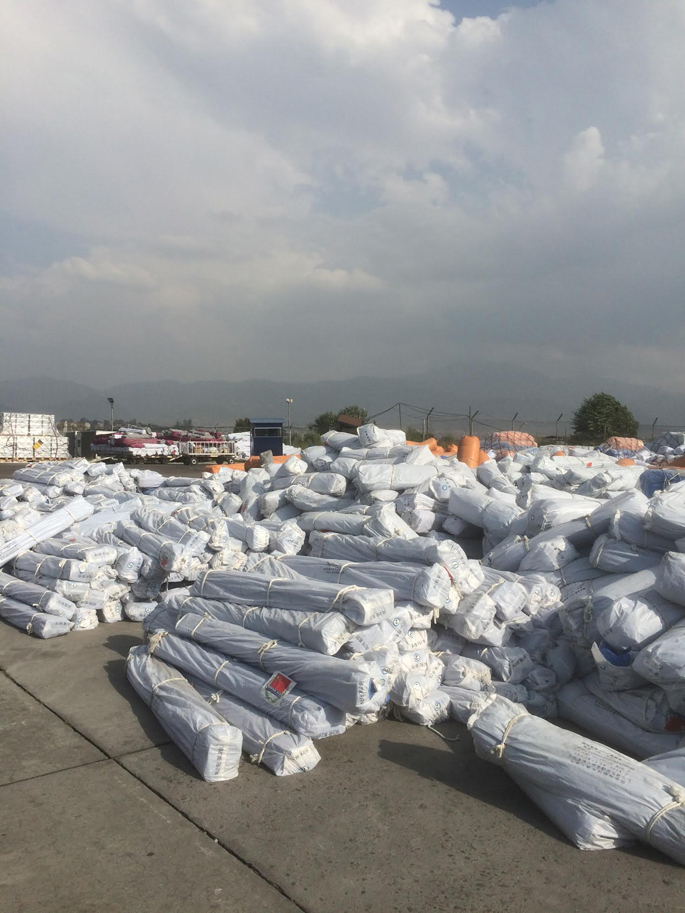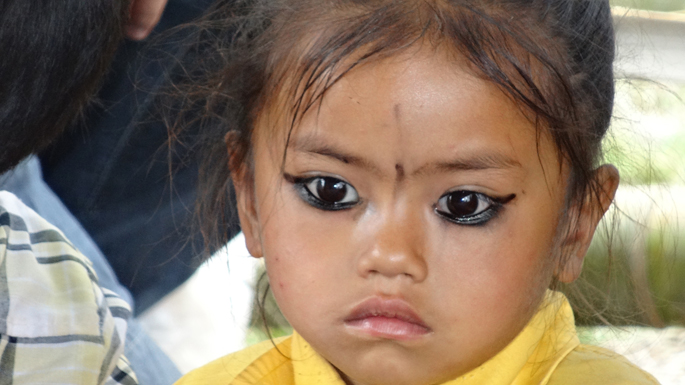
On June 3-8, Michal Szymanczak and Jose Varghese, Executive Secretaries of the World YMCA, visited Nepal at the invitation of YMCA Nepal. Their impressions from the visit follow.
———————————————————————————————————–
The earthquakes did not totally destroy the YMCA Nepal Childcare Centre in Khumaltar/Kathmandu. Only the water-tank on the roof had to be removed due to destructions. “And now children again are coming to our YMCA primary school”, says Mukti Acharya, National General Secretary of YMCA Nepal.
Mukti is a passionate, middle-age man, a teacher by education. He is proudly Nepalese, and often very critical of the developments which he observed in the country after the earthquake. We saw the location on the third floor terrace of the building where he was at 11:56; the moment when the earthquake on April 25th happened. “The building was moving, shaking; I thank God that nothing happened to our children, my family, and me” says Mukti.
Immediately after the earthquake Mukti established the YMCA Nepal Committee for Rescue Work. They decided to bring rice, noodles, sugar, tea, fresh water, and medicines to the villages in the Sindhupalchowk district; very close to the epicentre of the catastrophe. It is not very far from Kathmandu – a bit more than 100 km – but the travel by car takes more than half a day. The roads were partly destroyed and are full of bricks, stones, and dust. In the villages almost all of the houses were completely ruined and the small group of YMCA volunteers was the first relief team which managed to get there. Still, there is almost no government or international organizations aid for the victims…
We are listening to Mukti’s stories and we look at the children from the centre. Beautiful faces, some of them in school uniforms with YMCA ties, shy but also very interested in modern cameras and mobile phones in our hands. “What would you like to do when you will be mature?” I ask. The majority of girls want to be teachers, the boys plane pilots. “You should be proud of your children” we told Mukti. “Yes, I am” he says.
In the afternoon we went to Durbar Square, downtown of Kathmandu, the area on the UNESCO World Cultural Heritage list due to the architectural beauty of the old palaces and temples, and spiritual importance of the place. Durbar Square is damaged. Instead of foreign tourists there are tents with the victims and a few soldiers moving bricks from one place to another.
Next day we went to Bhaktapur, one hour’s drive from Kathmandu, and another Nepalese place on the UNESCO list. Wonderful Bhaktapur is also damaged. We walk through narrow streets where all the buildings can collapse at any minute. We walk among devastated temples and dust is thick in the air. Instead of foreign tourists there are only local people. They analyse the public list of the earthquakes victims who are recognized by the government, and they queue to access the simple Taiwanese medical point.
One day we went to Khursanibary village. It is only 30 km from Kathmandu, but in the suburbs of the town. We drove – literally – in-between the ruins of the buildings, so the travel takes almost 2 hours. The village is located on the top of a small mountain where all 16 houses and the local governmental Buddha Primary School were completely damaged during the earthquakes. YMCA Nepal has already supplied the local community with food, fresh water, medicine and tents. The school also got some furniture and materials for pupils. Now, together with community leaders, they have finalized their needs assessment and they plan to rebuild the Buddha School.
We sit in the office of the Principal of the school. It is a simple blue tent with a few chairs and one table. “I am sorry, I cannot offer you tea or coffee. The nearest water is on the opposite side of the mountain”, apologized the Principal. We went to another tent, this one being the classroom. With the group of children we kick a football as today is YMCA’s World Challenge Day! Children have lots of fun playing. It helps them to smile and laugh.
We contemplate the beauty of the green mountains. We see a young girl who in her hands is carrying a baby goat. This young animal is still not able to find a safe way among the ruins. From the front of the ruins of the house a man smiles to us. “Why do you smile?” we ask. “That’s my house, but I am lucky, during the earthquake God protected those beautiful flowers in my garden”.
Next day in our hotel in Kathmandu we experienced a light aftershock, just only 4.6 on the Richter Scale. It was enough strong to move our solid building like a ship on the waves. We discuss the information from “The Himalayan Times”, the biggest Nepalese daily english newspaper. Here are a few headlines from the newspaper: “Country lacks equipment to measure ground motion”; “Earthquake death toll climbs to 8,709”; “53 more bodies recovered in Langtang”; “Government needs money not foreign experts to deal with post-quake situation”; “Dispelling quake terror”; “Tourists turn into aid workers”; “Anti-trafficking body formed”; “Aid irregularities leave victims high and dry”; “Susan Sarandon: Nepal is still beautiful and alive”.
Yes, Nepal is still beautiful and alive. When we walked through Freak Street in the downtown area of Kathmandu we very easily can forget about the damage around us and imagine the street in the 1960’s and 70’s when it was a paradise for the whole hippie-generation. Many things impressed us: the beauty of Nepalese women and the colours of their sari’s; the taste of organic tea and coffee; Hindu, Buddhist, Krishna, Christian and Muslim prayers and meditations initiated in different places by individuals and organizations.
With YMCA Nepal we completed a lot of grey-work: their reports and financial statements after the first month of relief work and, most importantly, creating a general plan of earthquake response activities until the end of the year. The dream is to;
> improve facilities of the YMCA Childcare Centre as a safe space for children affected by the earthquake in Kathmandu area;
> reconstruct the Buddha School and toilet facilities in Khursanibary;
> provide educational scholarships for 200 pupils from the families with Earthquake Victim Identification Cards in Kathmandu, Khursanibary and Sindhupalchowk;
> strengthen the Nepalese YMCA movement and to develop a strategic plan for its sustainability through 2016-18.
This is an ambitious agenda! We all have to help them to succeed – with our donations, understanding of their challenges, and unlimited respect for their deep spirituality, with prayers.
After returning from Nepal we have already seen Mukti’s post on his Facebook page. It is a quotation from Jaaye Bhukapa Dev: There are few drops of rain in Kathmandu comes as a drop of tears of God from heaven to heal the people and land which is exhausted for a long time.
YMCA Nepal was formally established in 1997 and has app. 1000 members. In Khumaltar/Kathmandu they run an authorised YMCA Primary School for over 50 pupils and a Childcare Centre for 10-12 orphans and semi-orphans (at the same building). Before the earthquake, activities of YMCA Nepal included social work, youth and women empowerment, training and civic education, and environmental actions in many districts of the country.
